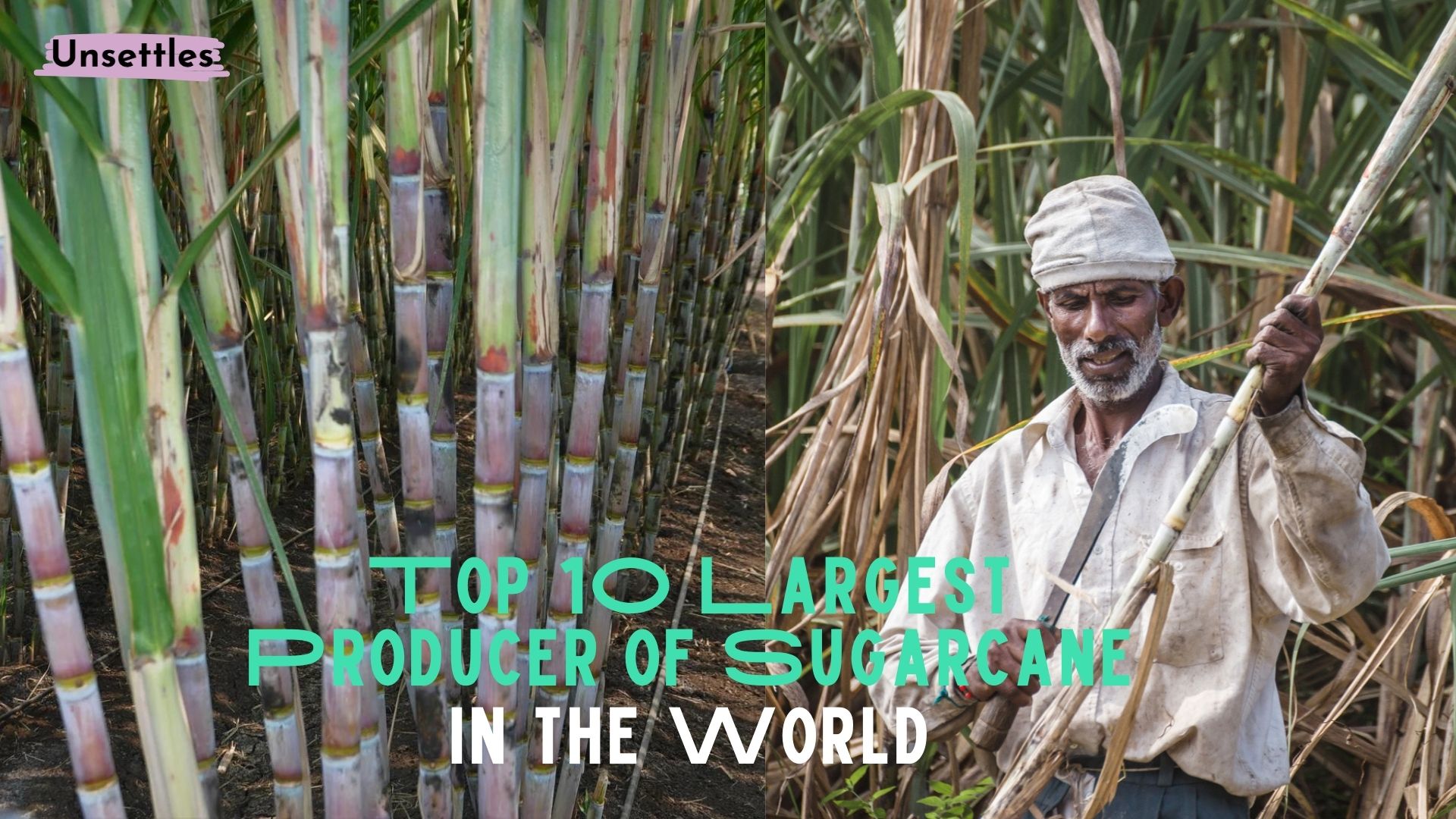The global sugarcane market is vast and multifaceted, playing a critical role not just as a sweetener but also in producing biofuel and spirits. Given its wide array of uses, it’s no surprise that sugarcane is a key player in the global economy. Brazil, the reigning leader in sugarcane production, stands out, but several other countries also make significant contributions, meeting the high demand worldwide. Let’s take a closer look at the top 10 largest sugarcane-producing countries and their role in this essential industry.
Top Sugarcane-Producing Countries in the World
1. Brazil
752.9 Million Tons:
Brazil firmly holds its title as the world’s largest sugarcane producer. Spanning millions of acres across regions like São Paulo and Minas Gerais, the country’s tropical climate is perfect for cultivating sugarcane. What makes Brazil stand out is its efficient production methods and advanced technologies, allowing it to dominate the global sugar market. As the world’s top sugarcane producer, Brazil doesn’t just meet global demand—it shapes the market. The country’s ability to balance large-scale production with high-quality output has made it a key driver of both the sugar and biofuel industries.
2. India
405.4 Million Tons:
India is the second-largest producer of sugarcane, thanks to its diverse climate and fertile soils. Sugarcane has been cultivated in India for centuries, particularly in states like Maharashtra, Uttar Pradesh, and Karnataka. Maharashtra leads in production due to its ideal climate, while Uttar Pradesh is another powerhouse, providing the bulk of India’s sugarcane supply. The combination of traditional farming methods and the country’s agricultural diversity helps India maintain its strong position in the global sugar market.
3. Thailand
131.0 Million Tons:
Thailand is a major sugarcane producer, benefiting from its tropical climate and fertile land. The central plains and northeast regions are particularly suited for year-round cultivation, leading to impressive production levels. Thailand’s sugarcane industry goes beyond just producing sugar—it also contributes significantly to ethanol production, aligning with the global push toward renewable energy. This dual role highlights Thailand’s focus on sustainable agricultural practices.
4. China
110.0 Million Tons:
China’s subtropical regions, especially Guangxi and Guangdong, are perfect for growing sugarcane, making it one of the top producers worldwide. The country combines centuries-old farming traditions with modern agricultural technologies to maintain its large-scale production. China’s ability to leverage its vast agricultural landscape ensures it remains a key player in the global sugarcane market.
5. Pakistan
66.9 Million Tons:
Pakistan’s sugarcane production thrives in the fertile lands along the Indus River, particularly in Punjab and Sindh. These regions’ ideal climates enable year-round cultivation, positioning Pakistan as one of the top sugarcane producers globally. Beyond fulfilling local sugar demand, the sugarcane industry in Pakistan also plays a crucial role in providing jobs and supporting the local economy.
6. Mexico
59.3 Million Tons:
Mexico’s tropical and temperate climates allow for substantial sugarcane production, particularly in states like Veracruz, Jalisco, and San Luis Potosi. The country’s adaptable climate helps maintain high yields throughout the year. Mexican sugarcane doesn’t just meet local demand—it is also a major export to markets such as the United States, strengthening trade ties and boosting the economy.
7. Colombia
32.7 Million Tons:
Colombia is one of South America’s largest sugarcane producers, thanks to the ideal growing conditions in Valle del Cauca and Cauca. The country’s sugarcane industry has evolved beyond just sugar production, contributing significantly to biofuel (ethanol) manufacturing as well. Colombia’s ability to diversify its sugarcane use for both food and renewable energy highlights its forward-thinking approach to agriculture.
8. Australia
32.4 Million Tons:
Australia is a key player in the Southern Hemisphere’s sugarcane market, with Queensland being the main region for production. The country’s tropical climate allows for efficient year-round cultivation, making Australia a significant exporter of sugar to Asia and the Middle East. Australia’s sugarcane industry benefits from its strategic location and strong agricultural practices, ensuring its place in the global market.
9. Indonesia
29.1 Million Tons:
Indonesia’s tropical climate and fertile soils across islands like Java, Sumatra, and Sulawesi make it a top sugarcane producer. The country not only meets domestic demand but also exports sugar to global markets. Indonesia’s growing sugarcane industry is a reflection of its expanding agricultural capacity and its importance in both local and international trade.
10. Guatemala
29.1 Million Tons:
Guatemala ranks among the top 10 sugarcane producers in the world, thanks to the favorable climates in regions like Escuintla and Zacapa. Sugarcane from Guatemala is known for its high quality, meeting both domestic needs and global demand, particularly in North America and Europe. The country’s ability to balance local consumption with strong export performance demonstrates its efficiency in sugarcane production.
Conclusion
The global sugarcane market continues to grow, with more countries joining the effort to meet the rising demand. Even smaller nations like the Dominican Republic are making their mark in this dynamic industry. As sugarcane remains essential for sugar, biofuel, and other products, the contributions of these leading producers ensure that the world’s sweet needs are met while also supporting economic growth through international trade.
